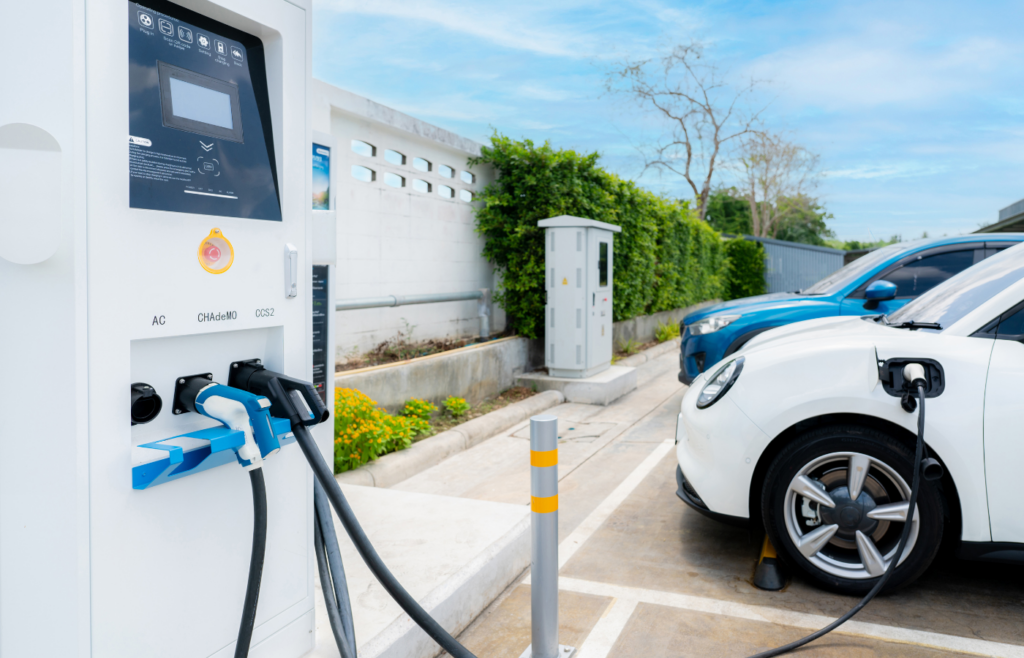In today’s rapidly urbanising world, cities are under increasing pressure to address the environmental challenges posed by their growing populations.
Among the most pressing of these challenges is the need to reduce carbon footprints, particularly from transportation, which is a major contributor to urban emissions. But rather than dwell on the doom and gloom, let's dive into the inspiring and innovative ways cities around the globe are going green with public transportation.
From electric buses zooming through the streets of China to bike-friendly havens in Denmark, the world is witnessing a transportation revolution that's not only eco-friendly but also incredibly exciting.
Electric and Alternative Fuel Vehicles: The Silent Revolution
Imagine a city where buses glide silently through the streets, emitting nothing but clean air. It may sound like a sci-fi utopia, but in Shenzhen, China, this is the reality.
Shenzhen made headlines by becoming the first city in the world to fully electrify its public bus fleet—over 16,000 buses strong. This move has slashed the city's carbon emissions by 1.35 million tons annually, the equivalent of planting over 19 million trees. The transition also means cleaner air for its residents, who can now breathe easier knowing that their daily commutes aren’t contributing to respiratory diseases.
But it’s not just about electric buses. Over in Kansas City, USA, the city’s public transportation system has taken a different route by switching to compressed natural gas (CNG) buses. While not as cutting-edge as electric, these buses still pack a punch when it comes to reducing emissions.
Kansas City’s CNG buses have cut greenhouse gases by 1,870 metric tons each year—a figure that’s comparable to removing nearly 400 cars from the road. It’s a testament to the idea that there’s more than one way to drive down emissions, and even small steps can lead to big gains.
Public Transportation: The Unsung Hero of Carbon Reduction
Now, let’s talk about something that might seem mundane but is actually a superhero in disguise: public transportation. It’s easy to overlook the humble bus or train, but these everyday workhorses are vital in the fight against climate change.
For example, if just one person decides to leave their car at home and use public transit instead, they can reduce their carbon footprint by about 20 pounds of CO2 each day. Over a year, that’s more than 48,000 pounds—about the same weight as six adult elephants.
The collective impact of public transportation is nothing short of astonishing. In the United States alone, public transit saves around 37 million metric tons of CO2 annually. That’s equivalent to the emissions from powering more than 4 million homes for a year.
Across the globe, other countries are finding creative ways to make public transportation more appealing. Take Tallinn, Estonia, for instance. This forward-thinking city has made public transit free for all residents, boosting ridership and cutting down on car use.
The city of Dunkirk in France also followed suit with its own free transit system. These initiatives are not only reducing emissions but also making cities more inclusive by ensuring everyone has access to mobility.
In Southeast Asia, the Philippines is set to continue its experiment on sustainable public transportation. The government has adopted the Jeepney Modernisation program, which aims to replace older, fossil fuel jeepneys with electric or Euro-4 versions. The goal is to provide a cleaner and reliable form of mass transit for millions of Filipinos who make the daily commute to work and school.
Pedal Power: Cities Embrace Active Transportation
Let’s shift gears and pedal over to a movement that’s gaining serious traction: active transportation. Whether it’s biking, walking, or scooting, cities are investing in infrastructure that makes it easier and safer to get around on two feet (or two wheels).
Copenhagen, Denmark, is often hailed as the poster child for bike-friendly cities, and for good reason. Nearly half of all journeys to work or school in Copenhagen are made by bike—a statistic that puts many car-dependent cities to shame.
The city’s extensive bike lanes, traffic signals for cyclists, and bike-sharing programs have made cycling the norm rather than the exception. This shift from cars to bikes is not only slashing emissions but also improving public health, as more people get active on their daily commutes.
Paris is another city that’s making waves with its focus on active transportation. The French capital is transforming itself into a "15-minute city," where everything residents need—work, schools, shops, parks—is within a 15-minute walk or bike ride.
This concept is revolutionising urban planning, reducing the need for cars, and making neighbourhoods more vibrant and connected. Paris has also expanded its bike lane network and introduced e-scooter sharing programs, proving that even one of the world’s most iconic cities can embrace a greener future.
Smart Transportation Systems: The Tech-Savvy Approach to Sustainability
Technology is playing a starring role in the quest for greener cities, with smart transportation systems leading the charge. These systems use cutting-edge technology to optimise everything from traffic flow to transit schedules, making urban mobility more efficient and eco-friendlier.
One of the coolest innovations in this space is the intelligent traffic management system. Imagine a city where traffic lights "think" for themselves, adjusting their timings based on real-time data to keep vehicles moving smoothly. These systems reduce the time cars spend idling, which not only cuts emissions but also saves drivers from the frustration of sitting in endless traffic jams.
By prioritising public transit vehicles and rerouting traffic away from congested areas, smart traffic management is making cities cleaner and more efficient.
Then there’s the rise of smart ticketing systems, which have made using public transit easier than ever. Gone are the days of fumbling for change or waiting in line to buy a ticket. With contactless payments, mobile apps, and digital platforms, hopping on a bus or train is as simple as a tap of your phone.
These systems don’t just make life easier for commuters—they also generate valuable data that cities can use to improve transit services and plan for the future.
And let’s not forget about autonomous vehicles (AVs). While they’re still in the early stages, AVs have the potential to revolutionize urban transportation. Picture a fleet of electric, self-driving shuttles zipping around the city, picking up passengers on demand. These AVs could reduce emissions by optimizing driving patterns, avoiding traffic jams, and eliminating the need for parking lots, freeing up space for parks and bike lanes.
Urban Planning: Designing Cities for a Greener Tomorrow
When it comes to reducing emissions, how a city is designed matters just as much as the vehicles it uses. Urban planning that prioritises public transportation and active modes of travel is key to creating sustainable cities.
One of the most effective strategies is high-density development, where people live closer to where they work, shop, and play. This reduces the distances people need to travel and makes public transportation more viable. Compact, mixed-use neighbourhoods are the antithesis of sprawling, car-dependent suburbs, and they offer a model for cities looking to reduce their carbon footprints.
Research shows that households located near public transit tend to own fewer cars and drive less. This has led to the rise of transit-oriented development (TOD), which focuses on creating vibrant, walkable communities centred around public transit hubs. TOD not only cuts down on emissions but also boosts local economies and enhances the quality of life for residents.
Cities are also rethinking how they use space. Many are reclaiming areas once dominated by cars—like parking lots and wide streets—and transforming them into green spaces, pedestrian plazas, and bike lanes. These initiatives are making cities more human-centred, reducing reliance on cars, and creating more inviting public spaces.
The Road Ahead for Green Public Transportation
The global movement towards green public transportation is gathering momentum, and cities are at the forefront of this transformation. From electrifying bus fleets to promoting cycling and walking, cities are proving that sustainable urban mobility is not just possible—it’s happening right now.
The examples highlighted in this article show that there’s no one-size-fits-all solution. Each city is finding its own path to sustainability, whether through high-tech innovations, smart urban planning, or simply making public transit more accessible and appealing. What’s clear is that these efforts are paying off, not only in terms of reduced emissions but also in creating cities that are healthier, more connected, and more resilient.
The road to a greener future is full of exciting possibilities, and with each step, cities are moving closer to a world where transportation is as sustainable as it is essential. To promote sustainability in the public transportation sector, Tembo has launched our initiative to electrify the iconic jeepneys in the Philippines. We have teamed up with local manufacturers to produce 100% carbon-free e-jeepneys for the benefit of thousands of commuters.
Together with our partners, Tembo’s goal is to provide our world-class sustainable energy solutions to the people of the Philippines to help drive the country to a cleaner and better future.
For more news & insights, stay tuned to the Tembo website.


